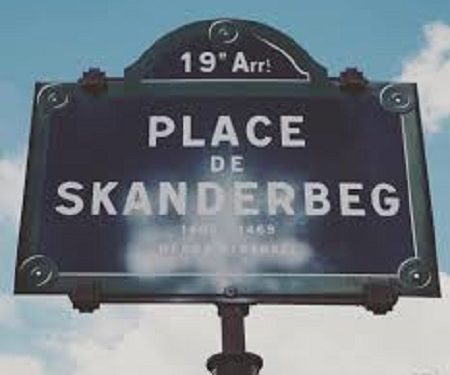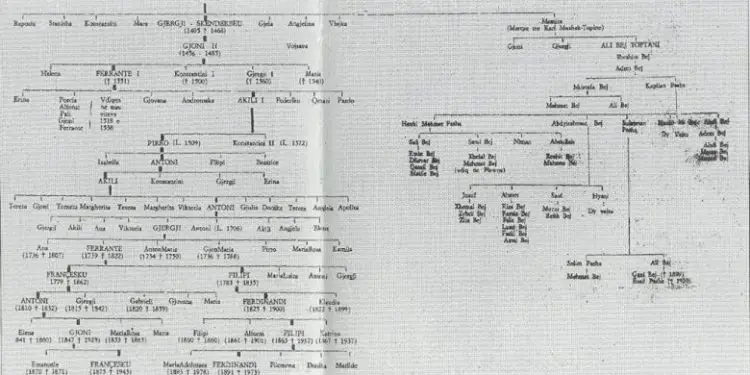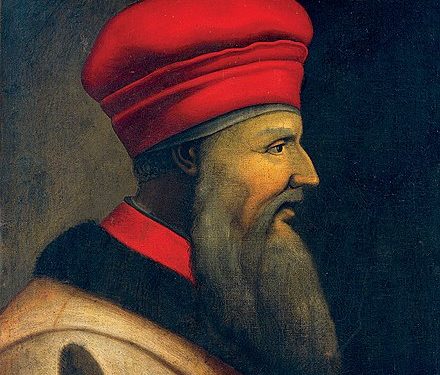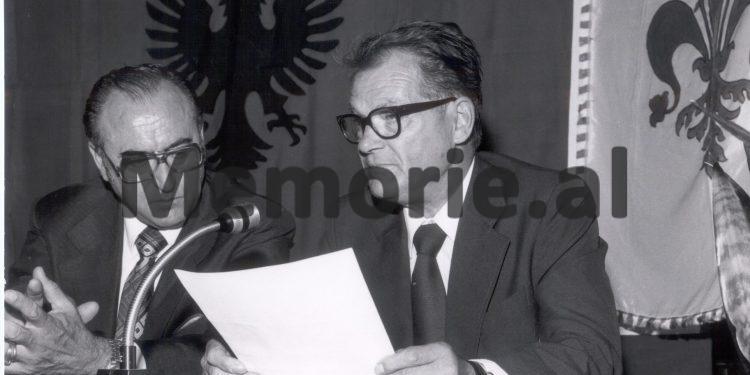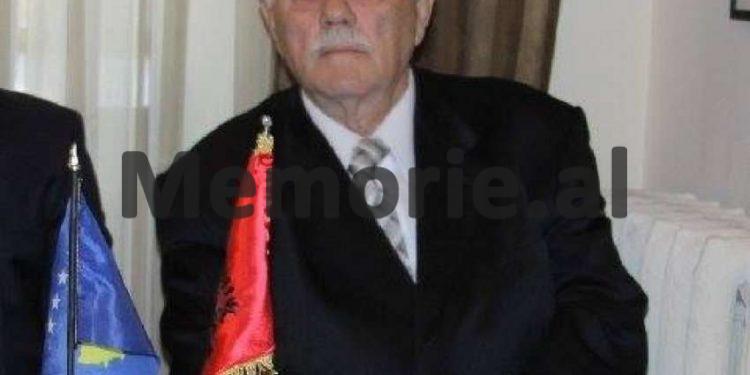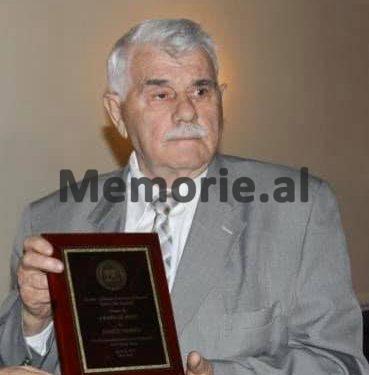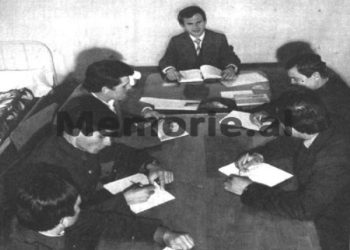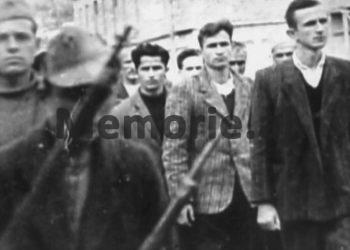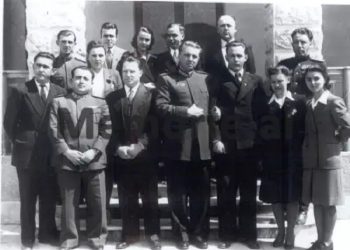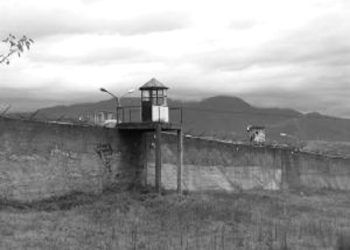Dashnor Kaloçi
Memorie.al publishes the unknown story of the placement of the name ‘Gjergj Kastrioti Skënderbeu’ in one of the main squares of Paris in 1968, by the Mayor of the French capital at the time, Francois Mitterend, who did it in a sign of respect and gratitude of Isa Ndreu and Lec Shllaku, two fugitive Albanian political emigrants, his friends, who had helped and financed his election campaign for mayor of Paris. The whole rare story of the naming ceremony of our national hero in one of the main squares of Paris on the occasion of the 500th anniversary of his death, where in addition to many French officials and politicians, attended by many of the main exponents, personalities of the Albanian political diaspora in the West and where only the Albanian diplomats of our embassy accredited in the French capital were absent. The rare event is made known by the editorial published by Lec Shllaku in the magazine “Koha Jonë” in 1968, which he and his friend, Isa Ndreu, published for years in Italy and France.
The story of our National Hero, Gjergj Kastrioti Skënderbeu, has constantly aroused great interest, and with his figure, life, work, battles, wars, diplomacy, etc., whole generations of chroniclers, scholars, historians, Albanians and foreigners, from his period to the present day. And, as a result, dozens of different studies and books have been written by foreigners, as well as by Albanian authors and historians. But, although in Albania there are a large number of studies and books about the figure of Skanderbeg, starting from the period of our National Renaissance, and especially after 1968, when his 500th anniversary was celebrated with great fanfare, it is never made it possible to publish the genealogical tree of his Kastriot family.
But what could not be done in Albania, was achieved and was done by the Albanian diaspora living in Italy, in 1968, on the occasion of the celebrations of the 500th anniversary of Skanderbeg’s death. This thing, the genealogical tree of the Skanderbeg family, was published in the magazine “Koha Jonë” that was published in Italy from 1962 to 1990, by Isa Ndreu (son of Cen Elezit, sucker of the famous Ndreu family from Slovenia of Dibra), as publisher, and Lec Shllaku as editor.
The genealogical tree of the Kastriot family, which we are publishing exclusively for the newspaper Tema in this article, starts from 1405 and extends until 1963, when it was summarized by one of its suckers (Gjergj Kastriot), who in 1968 submitted it to Mr. for publication. Lec Shllaku (originally from Shkodra, political emigrant in France and Italy), on the occasion of the 500th anniversary of Skanderbeg’s death.
Isa Ndreu and Lec Shllaku are also known as the two Albanians who made it possible for a square in Paris to be named “Skanderbeg”, which was made possible by the mayor of Paris, Jacques Chirac , as they had previously aided and abetted his election campaign. Thus, after many talks that Isai and Lec Shllaku had with their close friend Chirac, he convened the Paris City Council, which on July 10, 1978, on the occasion of the 100th anniversary of the League of Prizren, took the official decision and gave the name of Skanderbeg to one of the squares in the center of Paris, which was formerly called “Villa Lumier”.
After making this decision, the official ceremony for naming that square “Skanderbej” took place on May 6 and 7, 1980, attended by dozens of personalities of the Albanian anti-communist diaspora from many countries around the world. In that magnificent ceremony, only the ambassador of Albania was absent. After that, as a sign of gratitude and respect, Lec Shllaku and Isa Ndreu awarded a ‘Gold Medal’ to Mayor Shirak, which was presented to him with a magnificent ceremony in Paris, attended by personalities from all over the Albanian anti-communist diaspora.
Written by Lec Shllaku, editor of the magazine “Koha Jonë”, published in Italy in 1968
The nobleman and successor of Gjergj Kastriot-Skanderbeg, on the occasion of the Jubilee of the magazine, has sent us congratulations and a Genealogical tree of the Kastrioti Family, which we are publishing in these two pillars. The nobleman bears the name Giorgio Kastriot Scanderbeg, as the name of the great-grandfather, our National Hero, and resides with families in the districts of Naples. We have had superficial and obscure knowledge about the Kastriot family and generations, throughout the centuries, and for this reason we are interested in finding certificates and explanatory documents, directly from the Kastriot family itself, with which since the time of the baptism of the Place de la Skanderbeg, in Paris, we have been connected.
As it is known, Skanderbeg’s family, after his death and the Ottoman occupation of Albania, emigrated and settled in Southern Italy, among the properties that were donated and recognized by the King of Naples, Ferdinand of Aragon, for military aid that Skanderbeg gave when he landed in Italy, in August 1461, against the Prince of Taranto Giacomo Piccinino and the allied Barons who had besieged Trani and supported the French Gated Anjou, to rule over the Kingdom of Naples. Skanderbeg’s descendants, after failing in their attempts to liberate the country from Ottoman occupation, with dismissals in Albania, to seek the help of Venice and incite the people to revolt, although they never ceased to be interested in the fate of Arber’s homeland, stabilized once good in Italy.
From the Genealogical Tree of the Kastriots it appears that in Italy they enjoyed various and numerous Nobility titles (Nobilare), which came to them from the provinces, villages and cities they owned. At the same time, as Bulers (Generous-Noble who were, they married women of aristocratic families with paja (dowry of movable and immovable heirs, according to the tradition of the time which strengthened their position.
From these marriages, the Kastriots, in Italy, had many sons and daughters, with whom they secured, with the following generations, the Door and the Name of the Kastriots to the present day. In the Genealogical tree of the Kastriots, the direct descendants of Skanderbeg, are taken as a basis, according to our canonical tradition, the male heirs, for this reason some brothers-in-law, for generations, did not leave male descendants, the bellies were extinguished. In the Genealogical Tree of the Kastriots, as an annex, there is also that of the Topiaj, Islamized, Toptans, for reasons, Skanderbeg’s sister, Mamica in 1445, married Karl Muzhak Topi, and had three daisies: Gion, Gjergj and another who Islamized, took the name Ali Bey Toptani.
These genealogical records imply that the family of today’s Toptans originates from the first Ali Bey Toptani, son of Gjergj Kastrioti Skanderbeg’s sister. In the Toptan Genealogical Tree, certainly for lack of centuries-old contacts, the graphic records, in the generations of their descendants, are flawed and generic. As we can see, the door of the Toptans is centuries old, it is mentioned and derived from the First Karl Topija, Prince of Arbëria, (of Central Albania) who, to face the threat of Balsha II and the Venetians, turned to him for help the Turkish army that had reached as far as Macedonia.
In 1385, the Turkish army under the command of Hajredin Pasha defeated the armies of Balsha, south of Lushnja, where Balsha II himself was killed. It was the first time that the Turks entered Albania, but it was also clear that this fact would have serious consequences, considering that the Turks had started the invasions in the Balkans. For the reasons of the long centuries-old Ottoman occupation of Albania, I also stayed so long in Italy, of Skanderbeg’s descendants, it did not come to all the Kastriots to benefit, for a restoration of the Door to the Throne of Albania, so much so that a the foreigner, Prince Vidi, who abdicated died and left a ghost dynasty, with Skënder Wied.
The Kastriots of our times, especially Ferdinant Kastriot (15-1-1893 -18-7-1978) are interested in Albanian manifestations and events. In April 1968, when the Kastriot celebrations of the 500th anniversary of Skanderbeg’s death took place in Rome, the First of the Ferdinand Door participated with other family members. His descendants Philip died in 1984 and George (1928) represents the door of the Kastriots, but has only two daughters Marien (4-2-1958) and Maria Luisa (30-41963). For the continuation of the Door and the Name of the Kastriots, Philip left behind two daughters and a son Gjergj 92-8-1958). When Skanderbeg Square in Paris was inaugurated, Philip addressed the telegram we are publishing to Mr. Chirac.
And Gjergji is related to us, as the tradition of the Kastriot family loves him. As we are ascertaining from the Genealogical Tree of the Kastriots, for each generation the names of the first great-grandchildren are immortalized: Gjon and Gjergj In gratitude to the Aragonese the names Ferdinat Alfons. As historical names, Pyrrhus and Achilles: with Pyrrhus, Skanderbeg boasted, to Count Picinino, by said that he and his Albanians are of the same race and have the same blood. For women, Donika, Maria, Mara is eternal.
Paris. Nandor 1986. Memorie.al




